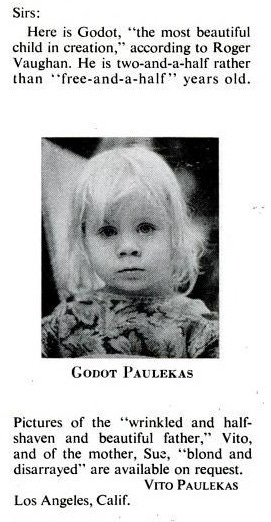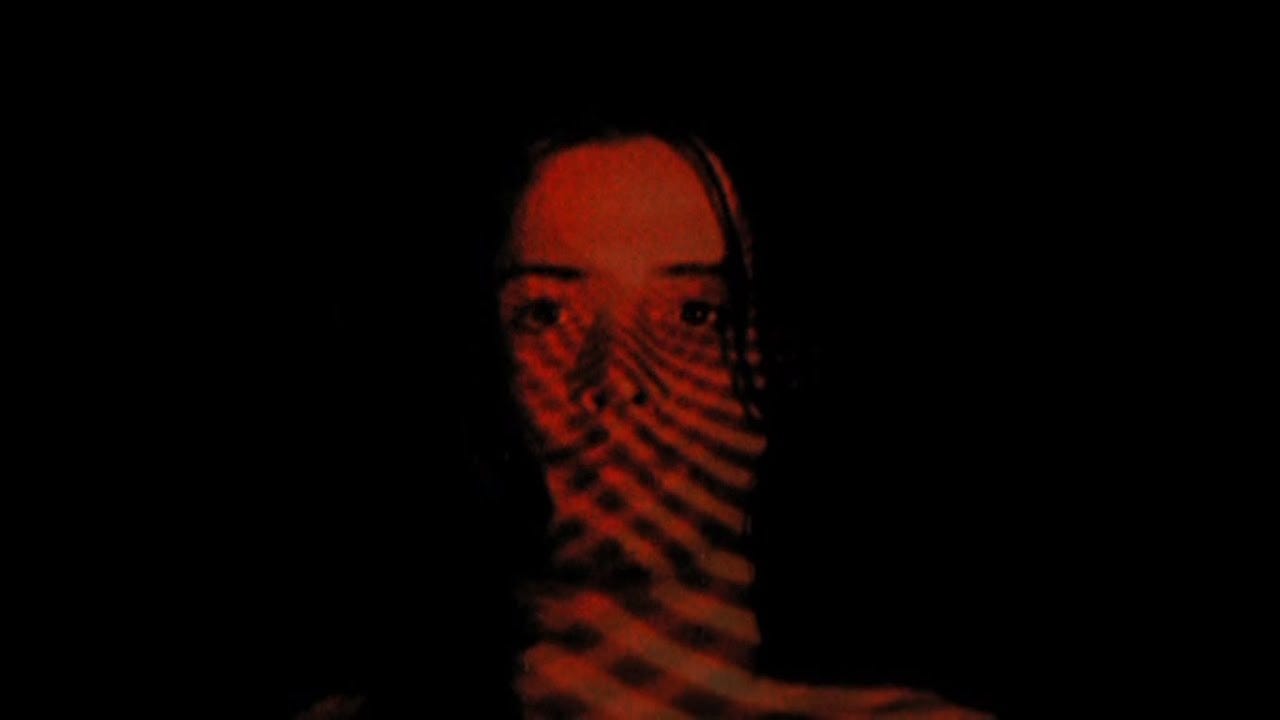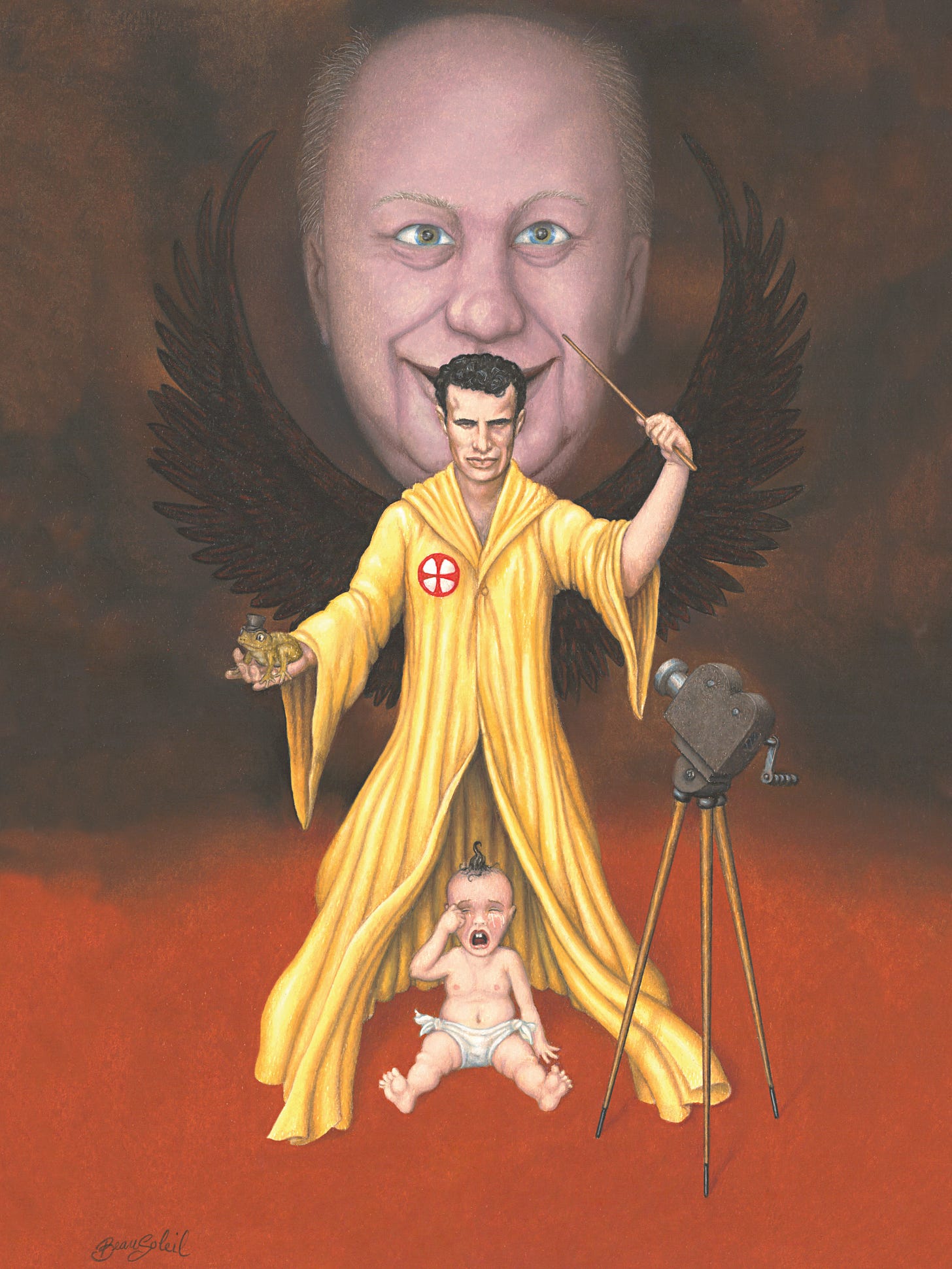All the colors of Anger
Lucifer Mark III
The tower commands a view across San Francisco bay where the cold Pacific current surges beneath Golden Gate Bridge. When the thick mist lifts, a gleaming star and oceanscape glitters beyond the city, punctuated by flashes from the Point Diablo and Bonita lights. Wrapped up against the cold, the two watchers keep vigil for UFOs from their vantage point in the Victorian mansion, dubbed the Russian Embassy from its time as a brothel serving the aristocratic and diplomatic elite.
The storied building has become a rabbit warren of apartments, peopled with jazz musicians, artists and luminaries of the counterculture. The imposing white door is detailed with red paint, and the legend is writ, ‘Do What Thou Wilt.’ For those who know their Rabelais, the phrase proclaims it an Abbey of Thelema. However, in the year of Sgt Pepper it is his reincarnation, the thelemite Aleister Crowley, whose ethos is in the ascendant.
Looking for signs in the sky are a forty year old Kenneth Anger and his nineteen year old leading man Bobby Beausoleil. The two have separate apartments, as Bobby is below the legal age of consent and Anger fears the cops, even though, despite the impresario’s desires, Bobby remains resolutely heterosexual. Anger has the entire first floor which was once Dark Eyes, a nightclub cum bordello named after a Russian folk song. His lead actor is bedded down in the parlour beneath flaking frescoes of cherubs, still blushing with memories, who sail above the newly painted purple walls and orange mouldings. It seems apposite, as Cupid is what they called Bobby on the scene. Tonight they sit in the leaky tower, spangle-eyed into the dawn. Tonight would not be the night, though the Slavic ghosts carouse in the house below through the early hours:
Dark eyes, passionate eyes,
Searing and beautiful eyes
How I love you, how I fear you!
I must have seen you at an evil hour!Oh, it is not for nothing that you are darker than the depths!
I see longing in you for my soul,
I see a victorious flame in you:
My poor heart is burned by it.But I am not sad, I am not sorrowful,
My fate comforts me:
All the best God has given us in life,
I have sacrificed to your fiery eyes!
But Beausoleil’s eyes are ocean blue beneath the top hat he customarily wore. They were perhaps what captured Anger when he first cruised him at The Invisible Circus in February ’67, a three day happening thrown by the Diggers at the radically liberal Glide Memorial Church. The talented Beausoleil was playing guitar in his latest band, the Orkustra, on this occasion accompanying a troop of gyrating belly dancers. The result was lush, cinematic, erotic, immersive. As was the Owsley acid drenching the synapses of the audience and performers alike.
In a flash Anger knew that here was his Lucifer, the lead for the latest film in his Magick Lantern Cycle, standing in the body of a vagabond dandy. Just as he had reacted to Cameron, feeling the sudden touch of fate; he was captured. He emphatically told him,
You will become the beloved, and through me you will rise to be feared and held in reverence.
Lucifer Rising? That must have resonated with the runaway, who had nurtured fantasies of power and violence growing up on the streets of Los Angeles. A pact was immediately struck. Beausoleil, barely knowing who Anger was, but hip to his status in the underground, assented to the Magus on one condition: that he would provide the music for the film. Both sides of the pact were blissfully unaware of the decade of work and eternity of infamy that process would extract from them.
Anger always cast actors in this way, and Bobby was properly Lucifer mark three. A brief encounter in Golden Gate Park was number one, some sort of boy with green-eyes and red hair who went by the name of Joey Lucifer. Like lightning, he just wouldn’t hang around. The child Godot Paulekas was the second; tragically, he fell to his death through a skylight in the Laurel Canyon home of his hippie-artist parents.1 Anger would get through (at least) six Lucifers by the end of the project.2
With Lucifer mark three, Beausoleil – the Beautiful Sun – he stood on the cusp of the momentous Summer of Love in the Hashbury. It was 1967, the year that Bobby called ‘that great hoax of freedom unfettered.’ He was right. Anger too knew the difference between liberty and license, it was his Lebensphilosophie. Freedom was promised to those who could walk that perilous edge. But their relationship would follow the current of the year, soaring, only to experience a jagged crash.
With the city that summer overflowing with starry-eyed youths, Bobby sequestered himself away to study Lucifer in the Russian Embassy. Availing himself of Kenneth’s conversation, library and direction, it became clear to him that Lucifer was not a figure of evil, but synonymous with color and light. Like all romantics, he found inspiration in Paradise Lost rather than the Bible. He put together a band, The Magical Powerhouse of Oz, and with no run-time, script or shot-list to turn to, instead made music as if to soundtrack Milton’s sublime epic. Anger expected serendipity to occur spontaneously between film and music, and Bobby was too cocksure with youth and dripping with musical inspiration to not take that step into the unknown.
Writing in 2019, Beausoleil recalled what Lucifer meant to both him and Anger that fateful Summer.
Lucifer, as conceived by Kenneth for the film, is an archetype representing the rebellious spirit of the artist, whose role it is to shine light into culture to promote the evolution of consciousness. It is the artist’s job to vandalize mindless obedience to the status quo, to defy the tyranny of social stagnation that contributes to cultural dystrophy; failing that, there would never be anything new in the world, never a fresh perspective. In this, the thematic intention, both visual and aural parts of the film project are conceptually united.
You can feel the antinomian energy of the original counterculture, the Diggers and peace freaks. Lucifer, as they envisaged him, was a new god creating a new age. The rites of creative destruction would instigate the future. Freedom was the watchword of their California dreaming. Anger wanted to capture and project the love trip for those beyond the West Coast through the magic of cinema.
Summer came and went, making props and getting shots together, titrated with the slow drip of acid. Anger first dropped LSD in the prestigious company of Aldous Huxley, but now he was leading the sessions. Bobby sprawls shirtless on a bed, screened with blue velvet curtains, tripping hard. Anger reads Crowley at him,
Suddenly a great shaft of light drove down and penetrated my chest. It kept pouring over me. This great shaft of white light. It became everything. I was obsessed, experiencing all there was. All the blood and all the killing. I was being killed. There were a million moving things, all the death and destruction. It was in my mind. It was in the environment. The voice of the magician kept on. Each word he said was the crackling of fire. I had no fear. I was being born into all the events of my life. Everything that had been was dead.
I was being reborn, being baptised by tongues of fire. Great demon eyes were glowing above me. Huge, vacant, no fear in those eyes.
I was complete. All was complete.
There was a great, shattering completeness in the cosmic forces. Born into this Flash Gordon world, there was I, wielding the great golden sword of the Vikings.
In those months Bobby came to believe that he was ‘the angel of disobedience,’ a heady conception for a nineteen year old. With no circle to delineate the boundaries of their rites, he began to live in Anger’s dreamworld and make it his own. The fantasies of power and violence had been with him since his life on the streets of LA. The individualistic and non-dual pronouncements of Crowley, though promising liberation, nurtured fatal seeds in the young man.
The city soured into autumn, and people just didn’t love like they used to. That discontent saw the Diggers proclaim ‘the death of hippy’ and ceremoniously carry a coffin through the Haight. Anger seemed to struggle to drive the film project and Bobby started to drift from the maestro. He had only been allowed to crash, but wasn’t making any cash. Persuaded to hand over an eye-smarting $700 for a guitar, Anger discovered his protégé had bought a brick of weed instead. The argument erupted with the virulence and recriminations that the otherwise urbane and charming Anger specialised in.
It was not his only moment of rage, the older man could barely conceal his sexual jealousy as Bobby continued to troop young girls off the streets and into his lair. But the drug deception was a trigger; lying to Anger, himself an inveterate liar, was the unforgivable sin. It is that consistent sense of being slighted, and the intemperate performative cursing that followed, which sabotaged any hopes of a successful life as an auteur. Anger was his own worst enemy, eternally justified, unable to forgive or accept blame, catastrophising professional relationships and personal friendships alike. In this he exhibited the worst aspects of the philosophy of Thelema, which can relentlessly magnify unexamined aspects of the ego.
At the spring equinox they had played a gig at the Straight Theatre, Bobby accompanying Anger’s ritual performance on a bouzouki, before a screening of the Magus’s films. The duo repeat the cash grab on September 21, in an event grandly entitled ‘The Equinox of the Gods’. This time Bobby has a full band and the ritual is filmed. Everyone is on acid. Anger parades in a robe, burns a copy of Liber OZ, and drapes himself in a swastika flag. It doesn’t go well. Bobby splits the next day.
Now the lies start.
Anger directs the narrative with brilliance. He has studied this art in the celebrity press, and he needs an audience to buy it so he can keep the camera rolling.
Beausoleil leaves the Russian Embassy, stealing Anger’s van. Four aluminium Ektachrome EF film cans shot over the summer with his name scrawled over the yellow labels are tossed into the back. That makes for an hour of footage.
Cursed by Anger, the van breaks down in the San Fernando Valley, and as Cupid surveys his broken chariot, a group of girls troop out of the hills, feral barefoot maenads with sultry eyes. Maybe Bobby would like to come live with them at the old movie ranch, named after its owner, George Spahn? Maybe he would like to meet Charlie? They are sure to get along.
Out of cash, Bobby talks to Manson who suggests that he ransom the film back to Anger. The aluminium cans are transferred into a dune buggy from the chop shop where Bobby’s van languishes, and are moved to Barker Ranch. Manson buries them deep in Death Valley. The precious film cannot survive the heat, melting the emulsion into a muted wash. The desert possesses the secret now.
Bobby becomes a killer. The sixties implode.
And that’s a cut.
The poetry of Anger’s version is true because it is made out of fragments of the light. The whole situation reeks of magic. The failure of Lucifer Rising is the failure of the sixties, and Bobby sets the terrible train of events in motion.
Anger has created a superimposition of lies. A once upon a time in Hollywood story. He has a few frames of Bobby left hung up in his cutting room, smoking reefer, ‘tattooed’ with red light projected on his naked torso. These find their way into Invocation of My Demon Brother, that wreckage of a short. Mick Jagger drones an indistinct synth over the assemblage, and that is all we have of the entire ’67 Lucifer project. He makes Demon Brother to get another round of funding, telling all that will listen that he has been robbed; but the story of the robbery keeps changing. In truth the movie was never made, Anger with his perfectionism, mental health issues, drug use and self-destructive methodology just couldn’t get the vision down. Bobby was right to scram from what had become an abusive situation, and confirms that the shooting just never got going.
Bobby, when he hit LA, lived in a tepee with a pet hawk and four girls. He didn’t break down at Spahn Ranch. Manson was squatting at Spiral Staircase in Topanga Canyon, and the two met when Bobby moved in with music teacher, and Buddhist, Gary Hinman, who lived nearby. It was Hinman who hooked up Manson with the Beach Boys. Manson and Beausoleil had a complex relationship: Charlie wanted to use Bobby to bring in the girls, Bobby needed cash and contacts for his music career, but didn’t need the whole guru schtick.
July 25 1969, Bobby, Susan Atkins and Mary Brunner turn up at gentle Gary Hinman’s house. He knows Bobby, so lets him in. Bobby has a knife and a gun. Hinman sold Manson $1000 of mescaline he cooked up in his basement. Manson sold it on to the Straight Satan biker gang, and having sampled it, they say it is poison. Bobby has come to extort money from Gary, and get him to sign over the pink slips on his cars to repay the angry bikers. Bobby and the girls hold Hinman and torture him for three days to no avail. Manson flickers into shot wielding a katana and almost severs Gary’s ear before fleeing the scene. Bobby finally stabs Gary and smothers him to death with a pillow as he bleeds out. He writes ‘political piggy’ and leaves a Black Panther paw print on the wall in Hinman’s blood; the aim is to misdirect the cops. The whole thing is fucked up. A sordid mess of broken children who have lost all sense of morality and are caught in a spiral of violence vengeance and stupidity.
Bobby gets busted a few weeks later in Hinman’s car with the murder weapon in the spare tire well. His arrest prompts the Manson family, and the girls lovesick for Bobby, into further slayings over two hot August nights. With more messages written in blood, the creepy-crawlers ‘make it witchy’ so that Bobby can get off the hook. The Tate-La Bianca murders are, if we can believe the trial account, instigated by Tex Watson. He proclaims – not that he is Lucifer – but the Devil, and ‘here to do the devil’s business.’ That theological distinction is lost in the justified horror at the slaughter.
The killings achieve nothing. On April 18 1970, Bobby is convicted and sentenced to death. His fall is complete.
America needed to plant a Satan for fear they would reap a Lucifer. Manson was their man: a cell-door Scientologist, a guru gone on a power-trip, an MKUltra asset run out of the Free Clinic, a mad jailhouse dog, an abused kid. Pick your poison. I am not going to waste further words on him. The forces of repression needed a scapegoat and that small man willingly played the part. Anger and Crowley are as guilty in the unfolding of events as Lennon and McCartney and the White Album were. Freedom and Love were the victims, exemplified by the pregnant Sharon Tate.
Anger needed to pursue the current, and with San Francisco’s flower fallen and Los Angeles sealed with blood, he fled to London. The darkness followed.
Epilogue
It was on Ocean Beach in the early morning, when it finally came, out of the sea and low over Seal Rock. The craft sailed above the weight of surf dredging up the damp sand. Over Cliff House it lofted, flashing ruby red and emerald green. The silent flight path would take it directly over the Russian Embassy. Holding up his fingers in a frame, he tracked and captured the shot. No camera to record, just three eye witnesses. Other than Kenneth, their names are lost to history but the image would persist.
To be continued.
It is perhaps notable that Godot and Beausoleil were already entangled, having both appeared in the 1966 Mondo Hollywood documentary.
Though he considered Brian Jones, he made more formal approaches to both Mick Jagger and his brother Chris, until the role fell on the shoulders of steel mill worker Leslie Huggins.









Incredible story.